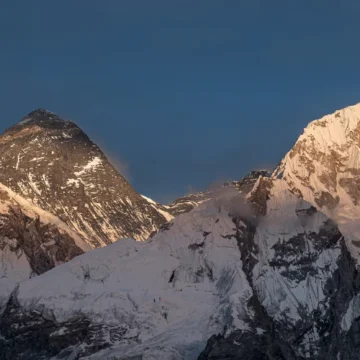
The Khumbu Icefall | Dangerous Area on Everest’s Route
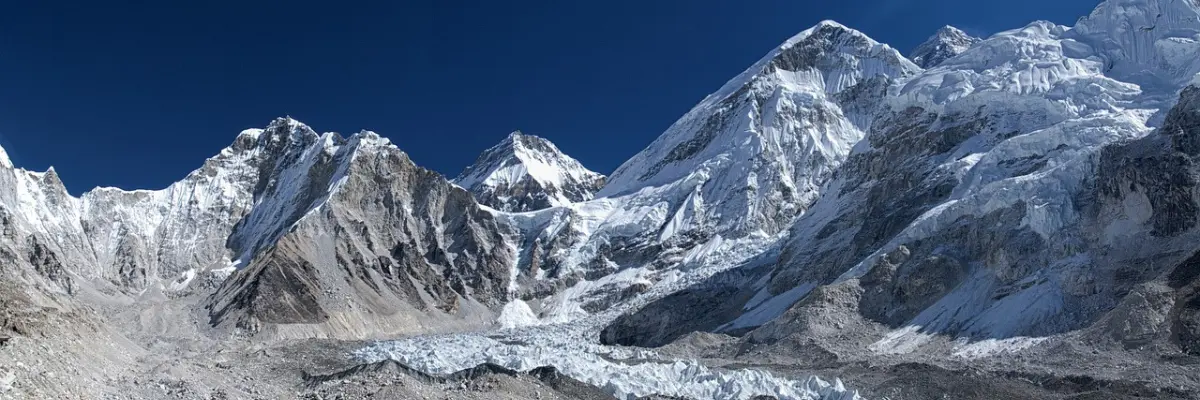
Table of Contents
The Khumbu Icefall is one of the most treacherous sections on the South Col route to the summit of Mount Everest. This labyrinth of ice is a key feature of the Everest climb, offering awe-inspiring beauty and perilous danger. Located on the Nepali side of the mountain, the Icefall is situated at an elevation of approximately 5,486 meters (18,000 feet) above sea level. Likewise, it is a critical gateway between Everest Base Camp and the higher camps on the mountain. It is a vital phase; nevertheless, there is potential for danger.
What is the Khumbu Icefall?
The Khumbu Icefall can be considered one of the most dangerous obstacles and is part of the South Col route on the way to Everest. It is fundamentally similar to a fluid that can shift at any time and is characterized by numerous deceptive cracks—crevasses and colossal ice formations called seracs. These ice formations change daily and move with the changing structure of the Icefall, making it a maze of ice every day.
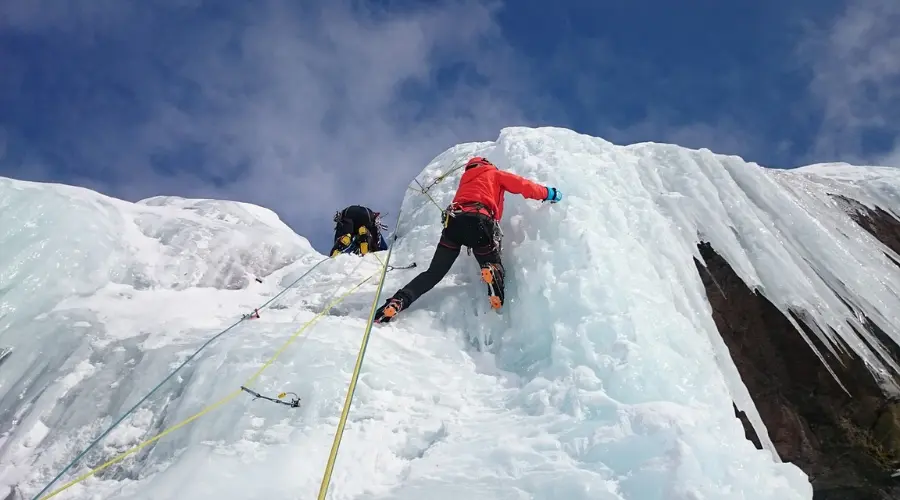
Needless to say, every climber who attempts to scale Everest directly from Nepali territory has to pass through this particularly dangerous area. This is a vital phase; nevertheless, there is potential for danger. This stage takes one from the base, the Everest Base Camp, to the higher camps of the mountain.
Where is Khumbu Icefall?
The Khumbu Icefall is located on the southern side of Mount Everest in Nepal. It sits between Everest Base Camp and Camp I, marking the first significant challenge for climbers heading up the mountain. It is located at an elevation of about 5,486 meters (18,000 feet) above sea level, nestled within the massive Khumbu Glacier. Additionally, this area is remote and incredibly challenging, with climbers relying heavily on the expertise of Sherpas to guide them safely through the Icefall’s many dangers.
Everest Base Camp to Khumbu Icefall
The trek from Everest Base Camp to the Icefall is short but incredibly demanding. Climbers usually set out in the early morning to avoid the Icefall at its most unstable, which happens as the sun warms it up later in the day. The distance is only about 1.5 kilometres (0.93 miles), but the rugged terrain and the need for caution slow the pace. Therefore, climbers must use ladders to cross deep crevasses, and every step requires vigilance. Even though it’s a relatively short distance, it can take several hours to navigate safely from Base Camp to the top of the Icefall.
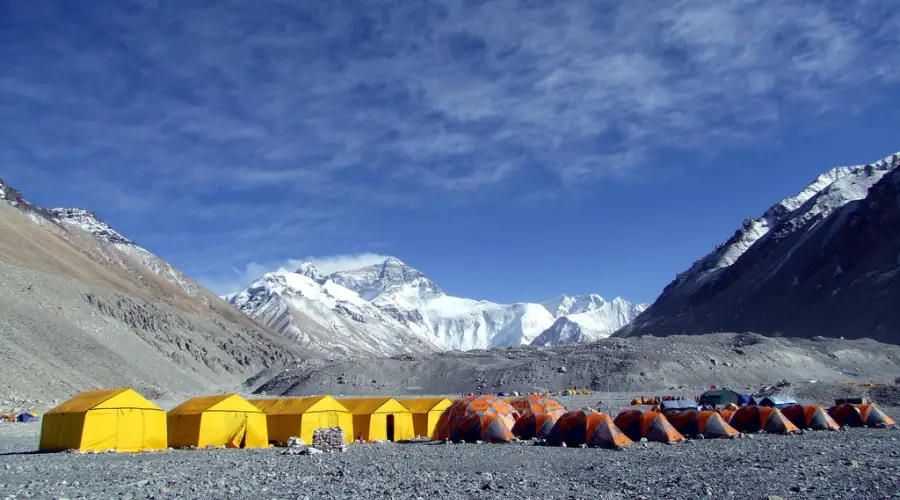
Khumbu Icefall Elevation
The Khumbu Icefall stands tall and intimidating. It begins around 5,486 meters (18,000 feet) and rises to approximately 5,900 meters (19,500 feet) at its highest point. This significant elevation, combined with the thin air at such heights, makes the Icefall a formidable challenge. Climbers must ascend nearly 400 meters through this unpredictable and often dangerous ice maze to reach safer ground.
Khumbu Icefall Temperature
Temperatures in the Khumbu Icefall can be brutal, especially early in the morning when most climbers start their ascent. It’s not uncommon for temperatures to plummet below -20C (-4F). As the day progresses and the sun rises, the temperature can increase significantly, causing the ice to become more unstable. This warming makes the Icefall even more dangerous because ice contains water, and water equals the toppling of the walls, thus creating avalanches.
Why is the Khumbu Icefall so Dangerous?
The Khumbu Icefall is notorious for its danger. The glacier is in constant motion, shifting by about one meter (three feet) daily. This movement causes the ice to break apart, forming deep crevasses and creating massive ice blocks that can collapse without warning. Seracs are large ice towers that can fall anytime, posing a serious risk to anyone nearby. Climbers recognise this treacherous section as the Icefall due to its difficult terrain, extremely high altitude, and low temperatures. There is always a danger of avalanches, falling ice and hidden crevasses when climbers are out there.
Khumbu Icefall Avalanche 2014
The Khumbu Icefall was the scene of a deadly avalanche in 2014, and such an incident witness clearly shows just how dangerous that portion of Mount Everest is. On April 18, a severe accident was observed when a large serac fell down the Icefall as a massive avalanche. 16 Nepalese Sherpas lost their lives that day while they prepared ropes and ladders for the upcoming climbing season. This disaster brought to light the immense risks faced by the Sherpas, who guided climbers through this challenging section and sparked discussions on improving safety measures for Everest expeditions.
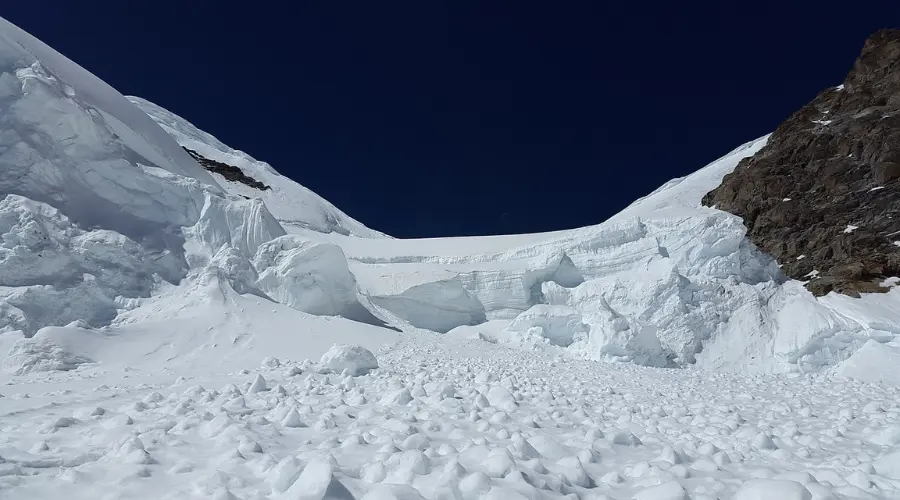
Khumbu Icefall Deaths
Unfortunately, the Khumbu Icefall is well known for having a high casualty rate. Climbers know this section for its constantly shifting slabs of ice, deep crevasses, and unpredictable avalanches, making it the most dangerous part of the climb. The Icefall claims the majority of the climbers’ lives through falling ice, avalanches, or a climber falling off a crevasse. The most catastrophic avalanche occurred in 2014; however, there have been numerous mishaps in the past decades. The lost lives are evidence of the climbing danger and other risks of climbing Mount Everest and the Icefall.
Post You May Like: Why is Annapurna So Deadly?
Facts About Khumbu Icefall
Living Ice Maze
The Khumbu Icefall is constantly shifting, about one meter (three feet) every day, making it a dynamic and ever-changing challenge for climbers.
Giant Ice Towers
The Icefall is home to massive seracs—ice blocks as tall as 12-story buildings—creating an awe-inspiring but intimidating landscape.
Ladder Bridges
Climbers cross the Icefall’s deep crevasses by walking across ladders laid flat over the gaps, often balancing on two ladders tied together.
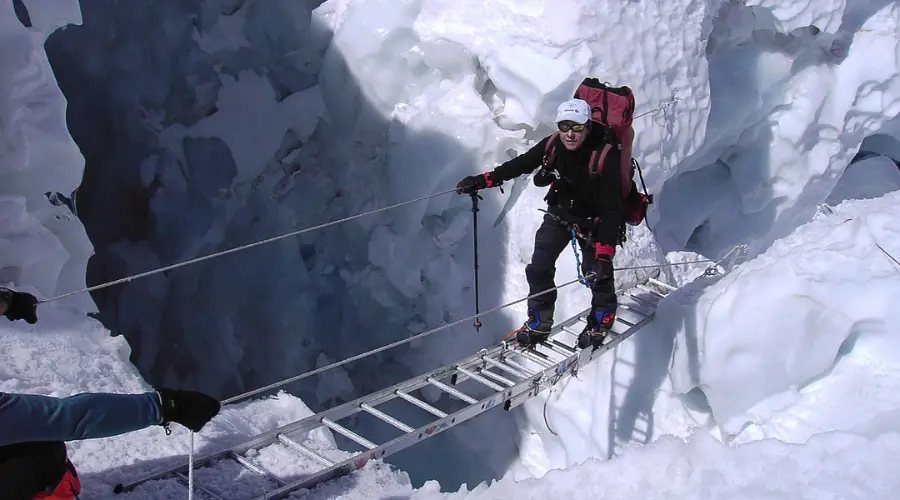
Super Deep Crevasses
Some crevasses in the Icefall are over 100 meters (328 feet) deep—so deep that they could swallow a building whole.
Early Bird Climbers
Most climbers tackle the Icefall before sunrise when the ice is still solid and less likely to shift or melt, making the trek safer.
Fast-Moving Glacier
The Khumbu Glacier, which forms the Icefall, is one of the fastest-moving glaciers in the world, slowly carrying tons of ice down the mountain.
Frozen Wonderland
Despite its dangers, the Icefall is a stunningly beautiful sight, with its towering seracs and deep blue ice creating a frozen wonderland like no other.

Khumbu Icefall’s FAQ
The Khumbu Icefall stretches about 2 kilometres (1.24 miles) from Everest Base Camp to Camp I. Although it’s not a long distance, the dangerous terrain makes it one of the most challenging parts of the climb.
It is practically impossible to avoid this section on the South Col route. Many climbers who want to conquer Mount Everest from the south side must cross it. Although there are alternative routes on the Northern side of the mountain or opt for Everest Base Camp Helicopter Tour, those come with their own challenges.
Crossing the Icefall can take about 3-6 hours, depending on the conditions and the level of experience. Normally, climbers start early in the morning to avoid the risk of melting ice due to sunlight.
The movement of the Khumbu Glacier from the Western Cwm area created the Khumbu Icefall. As the glacier moves and the slope changes, the ice breaks, forming large crevasses and seracs. The fact that the glaciers are constantly shifting ensures that the Icefall is ever-changing, creating a maze difficult to navigate.
According to the Himalayan Database records, 47 people have died in this region from 1953 to 2023, with three deaths in 2023 alone. Additionally, in the 2014 avalanche alone, 16 lost their lives.
The best time to cross the Icefall is early in the morning when the weather is colder and the ice is still stable. So, the ideal seasons to cross this region are spring (March-May) and autumn (September-November).
Yes, you must obtain a permit to climb Mount Everest. Also, there is an age restriction; you need to be over 16 years of age to climb Mt Everest.
Want to know more?
Speak to an Expert





Sandip Dhungana
Nepal 🇳🇵
Whatsapp: +977-9823636377


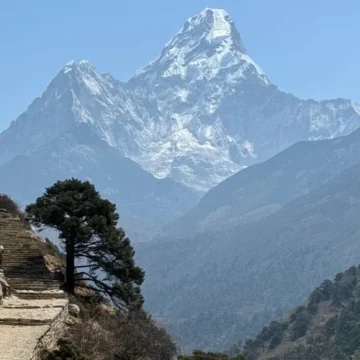
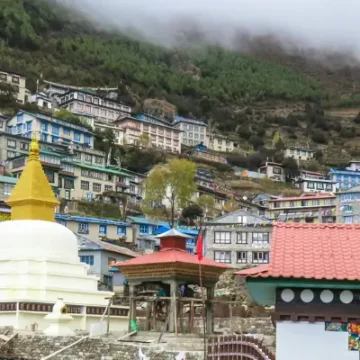

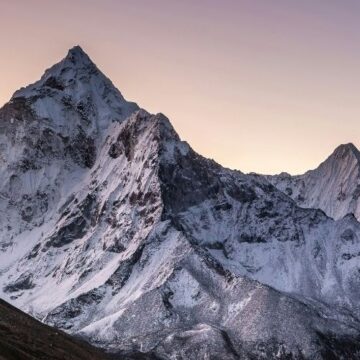
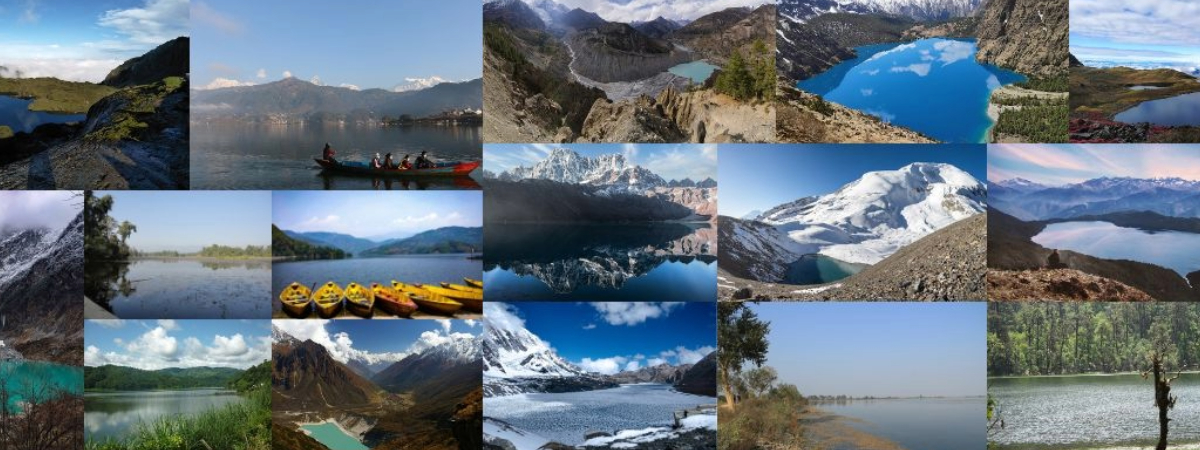

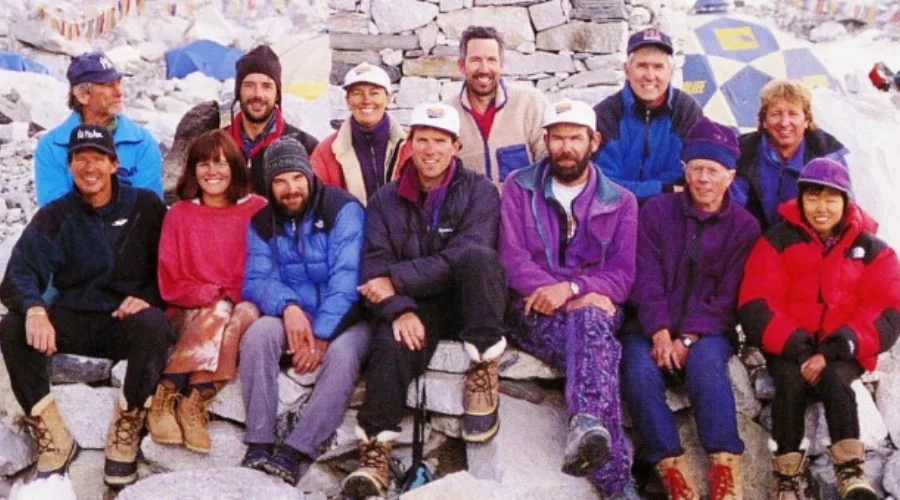
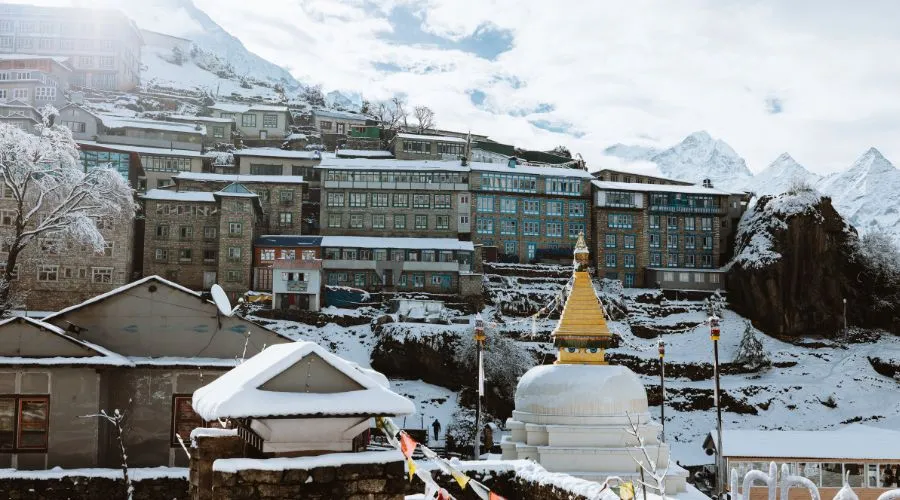


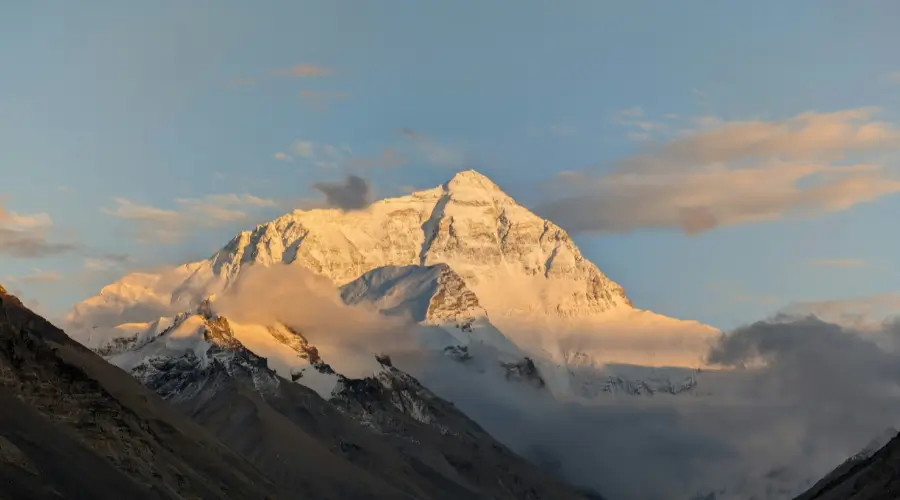














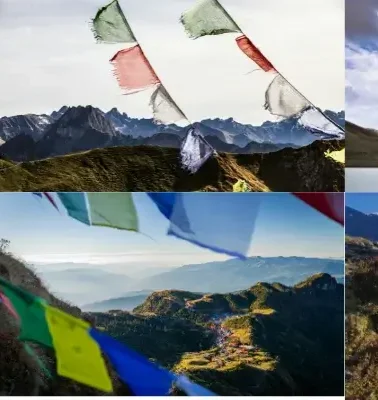
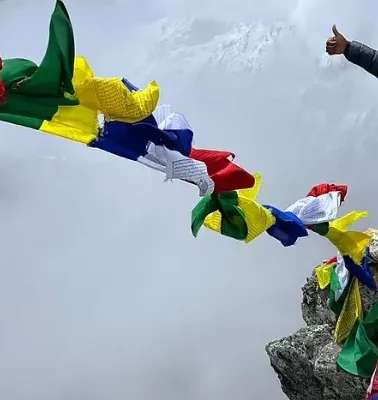
Leave Your Comment